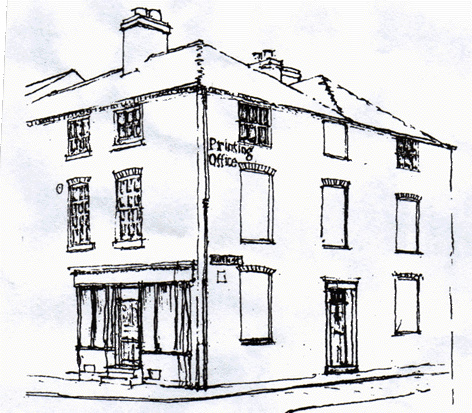George Nicholson, nationally known printer, settled in Stourport in 1808. Until his death in 1825 he produced a prolific number of works, including The Cambrian Traveller’s Guide,probably the best known and most popular work of his own time. Other notable titles from the Stourport years were 'The Conduct of Man to nferior Animals', 'Advantages of a Vegetable Diet' fourth edition 1819 and 'The British Orpheus (an anthology of songs and ballads with music) c.1816.
Throughout Nicholson's career, the quality of his printing skills and book production in whatever format was of a very high standard. An innovative tiny pocket sized series was well praised. He commissioned designs for wood and copper engraving from some of the best artists and craftsmen of the day for frontispiece, title page and vignette illustrations, and was one of the earliest printers to use the new techniques of lithography, and to experiment with title pages in colour. He commissioned famous artists and engravers, including Thomas Bewick, to produce designs for his books.
Photographs and information about Nicholson, his books and also about his premises in 15 Bridge Street are still being sought.
Priced at £2.00 the booklet is still available from Stourport Civic Society


In the early 1800s, George Nicholson, printer of Stourport, brought out two editions of 'The Cambrian Traveller's Guide' his collection of tours throughout Wales by selected travellers. The copies were printed at his Bridge street premises, sold by booksellers around the country, most notably in London through the agency of several named influential publishers of that time, and it seems the guide was very well received. The first edition of 1808 concentrated on Wales and the immediate environs, but the 2nd edition in 1813 delved further into the Marches of the border country, reaching home ground here in Worcestershire, even stretching so far as to take in that unlikely border town, Birmingham. a persevering spirit. It passes through Woofferton in the parish of Richard's Castle.'
This is Nicholson' s own contribution on Stourport in the Guide, in 1813:
This obviously explains the reason why Nicholson chose Stourport as a centre for his own extensive book trade.
Kidderminster Reference Library owns a fine, handsomely bound copy of the 2nd, 1813 edition of The Cambrian Traveller's Guide.
See also Raven Street entry for side elevation information.
